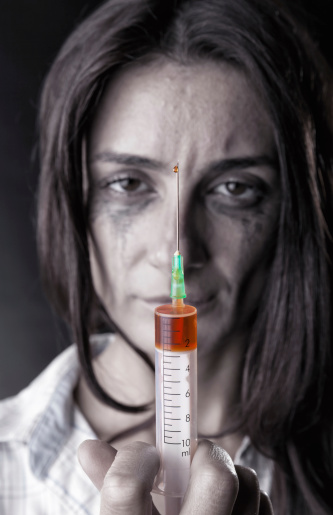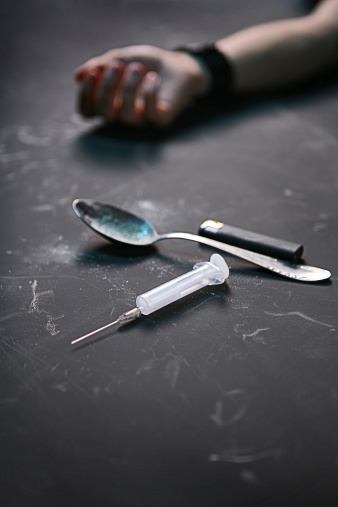Almost as soon as Florida gained control of their rampant prescription drug addiction problem, a new yet similar problem surfaced: heroin. Many are speculating that this correlates to the statewide crackdown on unscrupulous pain management clinics or pill mills. Officials and prevention advocates are just as alarmed now as they were during the height of the opioid epidemic, and for a good reason. There’s been a spike in heroin addiction because of the pill mill crackdown.

What Is a Pill Mill?
“Pill mill” refers to a doctor, clinic, or pharmacy that’s prescribing or dispensing powerful narcotics inappropriately or for non-medical reasons. Pill mills come in all shapes and sizes, but more and more are being disguised as independent pain-management centers. They also tend to open and shut down quickly to evade law enforcement.
Although there are pill mills in states like New York, Ohio, and Chicago, Drug Enforcement Administration (DEA) officials believe the highest concentration of pill mills are located in Florida and Texas. Some signs of a pill mill include:
- Accept cash only
- No medical records or x-rays are needed for prescriptions
- No physical exams
- There’s often a big crowd of people waiting to see the doctor
- They have security guards
- They only treat pain with pills
- You get a set number of pills, and they give you a date to come back for more
- You get to pick your own medication instead of needing a prescription
It’s against federal law for a doctor to prescribe pain medication without a legitimate medical purpose. If a prescription is deemed as not “valid,” a doctor can be charged with drug trafficking. This is a felony that comes with jail time and the loss of the individual’s medical license.

Pill Mills Shut Down & People Turn to Heroin
Heroin delivers many of the same effects as prescription painkillers but can be far more dangerous. In addition to heroin’s deadly and destructive impact on the individual user, the needles associated with the injection process can lead to widespread public health crises, such as HIV and hepatitis C.
According to the CDC, age-adjusted rate of overdose deaths increased by 31% from 2019 (21.6 per 100,000) to 2020 (28.3 per 100,000). Opioids – mainly synthetic – are the main driver of drug overdose deaths in the U.S. In fact, 82.3% of opioid-involved overdose deaths involved synthetic opioids.
The prosecution of Florida pill mills has drastically cut supplies of pills and created a void filled by heroin, a cheaper and more accessible alternative. The prices of pills in Florida have escalated to about $20 to $80 per pill or higher. In response, Mexican drug cartels seem to have taken advantage of this scarcity and have flooded the market with heroin for about $15 per dose. The percentage of heroin abuse in Florida is on course to be at its highest since the 1980s.
As a result of improved tracking and regulations on prescription pills, in addition to new formulations, to make them harder to abuse, individuals struggling with opioid addictions were left with three choices:
- Rehab to break addiction and learn to manage pain
- Find a new source for prescription pills
- Turn to heroin because of access and affordability
It appears that many have opted for the last of the three decisions, creating a series of unintended consequences from the pill mill crackdowns. While the heroin problem is not as out of control as the pill abuse problem was, several state and federal U.S. health officials feel the upward trend is troubling, and heroin public health emergencies have been called in Florida, Maryland, Vermont, Kentucky, Wisconsin, New Jersey, New York, Massachusetts, and the Great Lakes region.
Heroin vs. Pain Pills
One of the biggest differences between abusing painkillers and abusing heroin is the unscrupulous and haphazard way in which heroin is created, distributed, and used. While prescription painkillers are highly addictive and dangerous, they are manufactured in government-regulated facilities. No mystery ingredients exist in any prescription drugs, and people can trust that pills were not cut or diluted with any other toxic substances.
Heroin, on the other hand, is a street drug that can be made of any number of toxic chemicals. The potency of each dose varies, as do the ingredients. Heroin is bought from drug cartels, while prescription drugs are purchased from pharmacies. All of this makes it much easier for a person to overdose on heroin.
Even more concerning is that with injection being the most preferred way to take heroin, there’s a greater chance for users to contract deadly diseases with contaminated needles. Law enforcement officials also expect street crime to rise with the increases in heroin use, abuse, and overdoses.
Why Do People Use Heroin After Painkillers?
Widespread heroin addiction in the U.S. made its presence felt for the first time during the 1970s and 1980s when it was destroying inner cities and low-income neighborhoods. Today’s growing problem has left the urban streets and entered suburban homes. The newest heroin addicts often begin getting high on drugs found in their medicine cabinets before switching to heroin.
Now, instead of having to find new places to find prescription drugs, teens and young adults are ordering doses of heroin from street dealers or even on the Internet and having it delivered to their front doors. The immediate availability and relative affordability make heroin the drug of choice for many people struggling with opioid addictions.
This shift has turned heroin abuse into more of a middle-class and upper-class problem than it has ever been. More and more people, seemingly living lives of luxury and privilege, are abusing heroin, which has raised the level of concern around the issue. If wealthy celebrities like Phillip Seymour Hoffman and Cory Monteith can fall prey to heroin addiction – when it seems they have everything going for them – then it can happen to anyone.
Our Lake Worth Drug Rehab Can Help
One of the many ways that states are fighting back against the worsening heroin addiction problem is by recommending treatment over punishment. When drug abusers and addicts are incarcerated, they are not actually being rehabbed and are highly likely to continue abusing drugs upon being released from jail. This is something that has been proven through America’s failed war on drugs, during which drug use and abuse have increased.
Undergoing a complete rehabilitation program, and addressing the mental, physical, and spiritual damage caused by addiction, is the most reliable way to combat addiction. Addiction is a progressive disease, not a purposeful choice. It must be treated like any other disease, or the problem will only worsen. The sooner a person begins receiving treatment, the better their chances at a successful turnaround.
Behavioral Health of the Palm Beaches has been helping patients defeat addictions to heroin and many other drugs for over 20 years. Our combination of experience, expertise, and innovative therapies, is unmatched in the industry.
If you or someone you care about is struggling with heroin addiction, our heroin rehab program can help. Not only do we offer medically assisted detox to promote recovery from withdrawals and cravings, but we also offer treatment on a residential basis to help clients recover distraction-free.
For more information about our addiction treatment in Lake Worth, call BHOPB today at 561-220-3981 or send us your contact information, and an admission specialist will reach out to you.
Sources:
- CDC – Death Rate Maps & Graphs
Related Reading:



